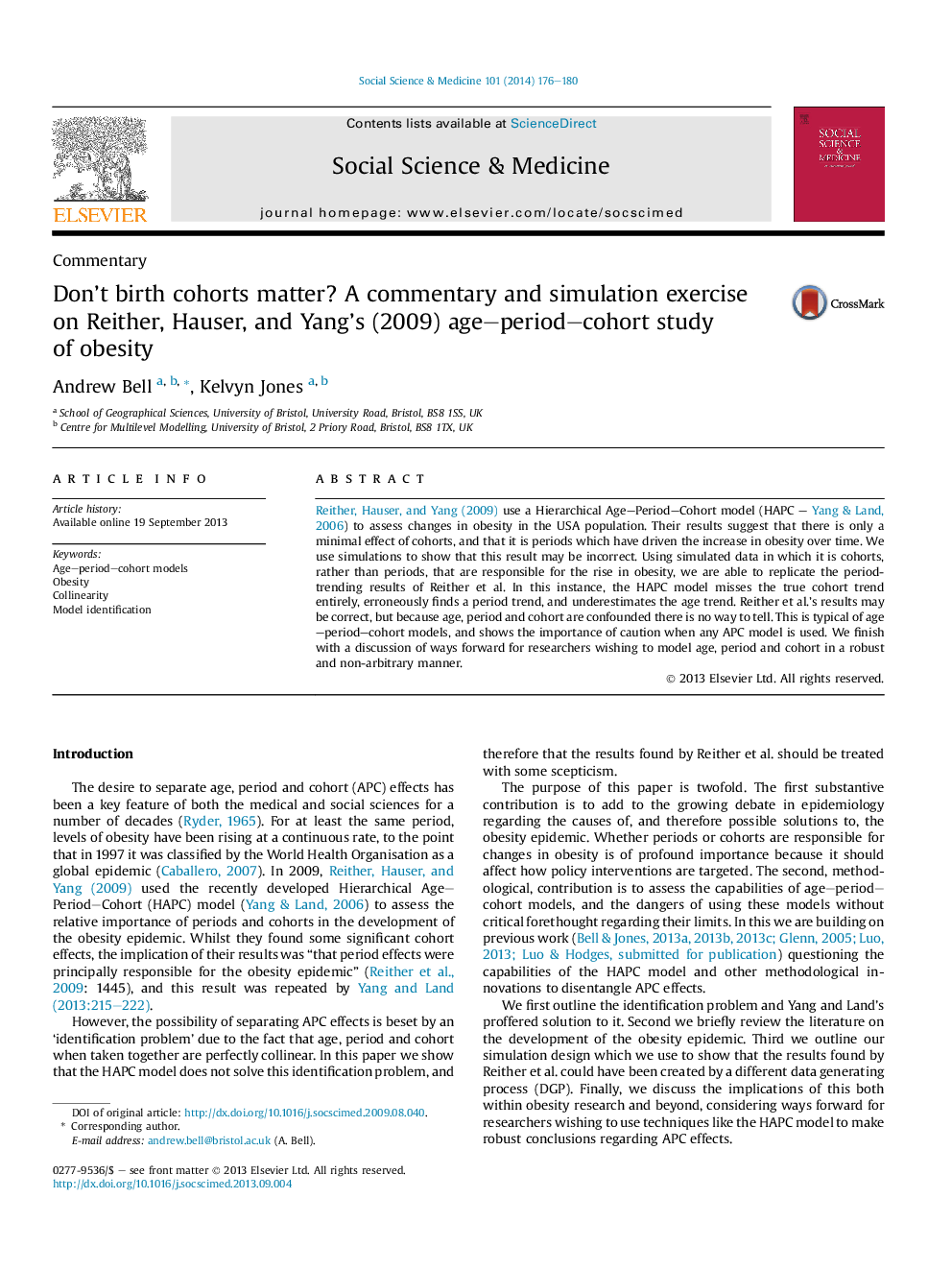| Article ID | Journal | Published Year | Pages | File Type |
|---|---|---|---|---|
| 7336010 | Social Science & Medicine | 2014 | 5 Pages |
Abstract
Reither, Hauser, and Yang (2009) use a Hierarchical Age-Period-Cohort model (HAPC - Yang & Land, 2006) to assess changes in obesity in the USA population. Their results suggest that there is only a minimal effect of cohorts, and that it is periods which have driven the increase in obesity over time. We use simulations to show that this result may be incorrect. Using simulated data in which it is cohorts, rather than periods, that are responsible for the rise in obesity, we are able to replicate the period-trending results of Reither et al. In this instance, the HAPC model misses the true cohort trend entirely, erroneously finds a period trend, and underestimates the age trend. Reither et al.'s results may be correct, but because age, period and cohort are confounded there is no way to tell. This is typical of age-period-cohort models, and shows the importance of caution when any APC model is used. We finish with a discussion of ways forward for researchers wishing to model age, period and cohort in a robust and non-arbitrary manner.
Related Topics
Health Sciences
Medicine and Dentistry
Public Health and Health Policy
Authors
Andrew Bell, Kelvyn Jones,
